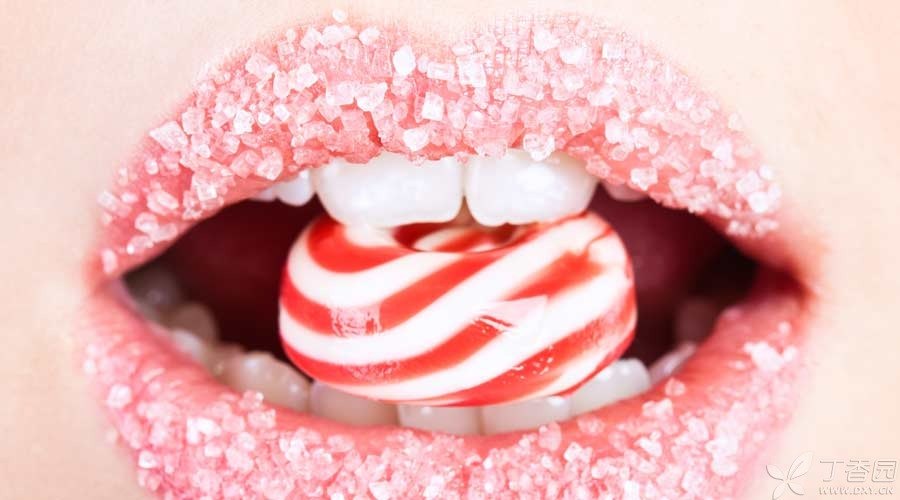
The World Health Organization (WHO) has issued Guidelines on Sugar Intake for Adults and Children (Guideline: Sugar Intake for Adults and Children), which has aroused people’s attention to the problem of excessive sugar intake.
Is this what candy? Which sugars need to be restricted? Does it include sugar in fruits? Does it include juice? Does it include honey? I don’t eat much sweets everyday, do I also eat a lot of sugar?
Many people are very confused about these problems.
What is [invisible sugar]?
According to the World Health Organization, these sugars do not include sugars naturally occurring in fresh and complete fruits, lactose in milk, or starch in grain grains and potatoes.
They refer to sucrose (white granulated sugar, soft white sugar, crystal sugar, brown sugar), glucose, fructose, etc. added when human beings make food, and also include sweet starch hydrolysis products such as starch syrup, maltose syrup, glucose syrup, fructose syrup, etc. commonly used in the food industry.
Pure fruit juice, concentrated fruit juice and honey also need to be restricted, although they all give people the impression of [natural] and [healthy].
On the basis of the available evidence, WHO strongly recommends that people limit the intake of free sugar for life. Both adults and children are advised to limit the intake of free sugar to less than 10% of the total energy intake per day, and preferably further limit it to less than 5%.
So, how much sugar is [10% of the total energy consumed every day]?
For adult women with light physical activity, the recommended daily total energy intake (calorie) is 1,800 kilocalories, and 10% of the total energy is 180 kilocalories, equivalent to 45 grams of sugar. What if the amount of sugar is further limited to half? That’s 22.5 grams.
It sounds like 45g of sugar is quite large, but unfortunately, once it becomes food, it will appear too little.

The ubiquitous [invisible sugar]
For example, if you drink a 500 ml bottle of Coke, you can easily drink 52.5 grams of sugar, which of course exceeds the limit of 45 grams of sugar set by the World Health Organization.
The sugar content of most commercial sweet drinks is between 8% and 12%, which is really [one bottle will be excessive].
Many people may say: I pay attention to health and never give my children cola. My family only drinks pure fruit juice. However, as mentioned earlier, pure fruit juice is not among the ones that can be drunk at will.
For example, the sugar content of commercial pure grape juice is between 16% and 20%. Even if calculated at 16%, one cup (200ml) of disposable paper cup contains 32 grams of sugar, which has exceeded 22.5 grams. However, a large bottle sold on the market in 500ml contains as much as 80g!
The so-called [drinking fruit] sounds very fashionable, but in fact, the health benefits of fruit are not fully obtained, but the effect of adding weight by drinking a lot of sugar is easily obtained.
Another high-sugar product that deserves special attention is lactic acid bacteria beverage.
At present, lactic acid bacteria beverages on the market all appear as healthy drinks, and often claim to be [zero fat]. However, they also have the problem of high sugar content, which is usually above 15%. According to 15% alone, if you drink 340 milliliters of this medium-sized lactic acid bacteria beverage on the market, you will consume 51 grams of sugar, far exceeding 22.5 grams.
The red jujube pulp and honey grapefruit tea that the girls like are all added with a lot of sugar and drunk in the name of beauty beauty.
In fact, the effect of beauty care may not be seen, but several large cans of sugar have actually been eaten.
The sugar content in honey is usually more than 75%, of course, also need to be strictly limited. Many people use 1 tablespoon of honey to make a cup of honey water in the morning, will also take in more than 20 grams of sugar. There is also brown sugar, which contains more than 90% sugar. Although brown sugar contains a little more minerals than white sugar, but after all, the sugar content is very high, and it is not recommended to eat a lot of it every day.
Baked goods and pastries have always been a large source of sugar. Don’t say that 15% ~ 20% sugar is added to the sweet bread and cookies on the market. Even if you bake them yourself, there is usually enough sugar in the formula.
Use 8% sugar to make snacks, but you can just taste a little sweet. The soft steamed buns, steamed buns, milk yellow bags and the like that are liked in Jiangnan area need 5% ~ 8% sugar to be added to the dough, which makes you feel delicious.
Attention should also be paid to daily family seasoning. If you are not careful, the amount of sugar you eat is very considerable.
For example, many people must put sugar when drinking eight treasures porridge. Coffee should be sweetened. Sugar should be added to make red bean paste and mung bean paste. Tremella soup should be boiled with crystal sugar. Pear soup should be stewed with crystal sugar. Sugar should be added to eat zongzi. Tangyuan also has sugar in it. Sugar should be added to make a fish-flavored dish. In order to neutralize the sour taste of vinegar, some sugar is often added to mix cold dishes. In order to increase the freshness and color of braised vegetables, some sugar should be added. Many families stir-fry tomatoes and eggs with sugar. Sweet and sour dishes contain a considerable amount of sugar. If it is a thick and sweet dish such as litchi meat, the sugar content may be as high as 15%.
Speaking of which, it will be found that it is really quite difficult to control the amount of sugar eaten every day to less than 5% of the calories per day.
The Harm of [Invisible Sugar]
Some people will say again: Why are you so haggle over every ounce? Will you die if you eat more sugar?
Yes, sugar certainly does not kill people immediately. Just like breathing heavy smog, it does not kill people immediately. However, eating more sugar over the years, just like breathing polluted air over the years, is likely to make people sick in advance.
Many studies have found that excessive intake of free sugar will damage teeth, increase obesity, promote diabetes, kidney stones, gout, and even increase the risk of heart disease and various cancers. Is there not enough reason?

[Invisible Sugar] Health Tips
Of course, your mouth grows on yourself. Whether we really need to control the sugar we eat every day is up to us. Here are just simple health advice for your reference:
1. Try not to drink all kinds of sweet drinks in daily life. It’s just a party once in a while. Don’t take the initiative to drink it.
2. Eat fruits directly. Commercial fruit juice and freshly squeezed [raw juice] should be controlled within 1 cup. When squeezing fruit and vegetable juice, try to put more vegetables and less fruits to avoid excessive sugar content in self-made fruit and vegetable juice;
3. Limit lactic acid bacteria beverages and carefully read the [carbohydrate content] item on the food label;
4. If you want to drink a cup of brown sugar water or honey water every day, you’d better stay away from other sweets, sweet drinks, biscuits, cookies, chocolates, etc.
5. Drink coffee with as little or no sugar as possible, and drink milk and soya-bean milk without sugar.
6. If a product claims to be [low sugar] or [sugar-free], it depends on whether it meets the standards stated on the nutrition label (whether the sugar content in 100 ml of liquid or 100 g of solid is lower than 5 g for low sugar and lower than 0.5 g for sugar-free);
7. Try to control the quantity of baked goods. Making bread, biscuits and snacks by oneself may be very emotional, but unless sugar is not added, it is not a reason to let go of eating every day.
8. Try not to get into the habit of drinking porridge and adding sugar in daily family seasoning. Drink less sweet soup, and it is best to limit the sugar in cooking to the extent that it does not obviously feel sweet.
9. Be careful of the sugar added to [nutritious cereal] and various [aleurone] products. The quantity is really considerable.
Responsible Editor: Fu Ting
The article was reprinted by Clove Garden authorized by the author.
